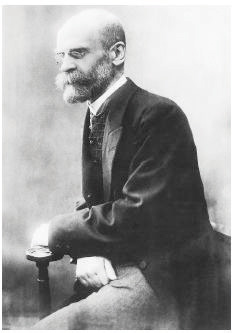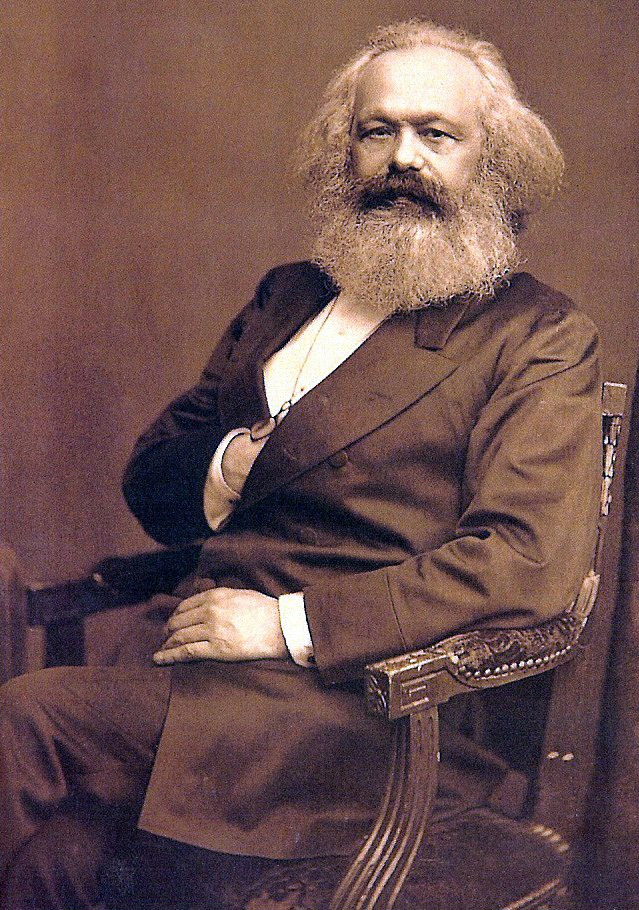Theoretical Perspectives in Sociology
Learning Objectives
- Distinguish macro approaches in sociology from micro approaches.
- Summarize the most important beliefs and assumptions of functionalism and identify some key founders.
- Summarize the most important beliefs and assumptions of conflict theory and identify some key founders.
- Summarize the most important beliefs and assumptions of symbolic interactionism and and identify some key founders.
- Summarize the most important beliefs and assumptions of utilitarianism.
We have talked repeatedly about “a” sociological perspective, as if all sociologists share the same beliefs on how society works. This implication is misleading. Although all sociologists would probably accept the basic premise that social backgrounds affect people’s attitudes, behavior, and life chances, their views as sociologists differ in many other ways.
Macro and Micro Approaches
Although this may be overly simplistic, sociologists’ views basically fall into two camps: macrosociology and microsociology. Macrosociologists focus on the big picture, which usually means such things as social structure, social institutions, and social, political, and economic change. They look at the large-scale social forces that change the course of human society and the lives of individuals. Microsociologists, on the other hand, study social interaction. They look at how families, coworkers, and other small groups of people interact; why they interact the way they do; and how they interpret the meanings of their own interactions and of the social settings in which they find themselves. Often macro- and microsociologists look at the same phenomena but do so in different ways. Their views taken together offer a fuller understanding of the phenomena than either approach can offer alone.
Microsociologists examine the interaction of small groups of people, such as the two women conversing here. These sociologists examine how and why individuals interact and interpret the meanings of their interaction.
Piero Fissore – CC BY-NC-ND 2.0.
The different but complementary nature of these two approaches can be seen in the case of armed robbery. Macrosociologists would discuss such things as why robbery rates are higher in poorer communities and whether these rates change with changes in the national economy. Microsociologists would instead focus on such things as why individual robbers decide to commit a robbery and how they select their targets. Both types of approaches give us a valuable understanding of robbery, but together they offer an even richer understanding.
Within the broad macro camp, two perspectives dominate: functionalism and conflict theory. Within the micro camp, two other perspectives exist: symbolic interactionism and utilitarianism (also called rational choice theory or exchange theory) (Collins, 1994). We now turn to these four theoretical perspectives, which are summarized in Table 1.1 “Theory Snapshot”.
Table 1.1 Theory Snapshot
| Theoretical perspective | Major assumptions |
|---|---|
| Functionalism | Social stability is necessary to have a strong society, and adequate socialization and social integration are necessary to achieve social stability. Society’s social institutions perform important functions to help ensure social stability. Slow social change is desirable, but rapid social change threatens social order. Functionalism is a macro theory. |
| Conflict theory | Society is characterized by pervasive inequality based on social class, gender, and other factors. Far-reaching social change is needed to reduce or eliminate social inequality and to create an egalitarian society. Conflict theory is a macro theory. |
| Symbolic interactionism | People construct their roles as they interact; they do not merely learn the roles that society has set out for them. As this interaction occurs, individuals negotiate their definitions of the situations in which they find themselves and socially construct the reality of these situations. In so doing, they rely heavily on symbols such as words and gestures to reach a shared understanding of their interaction. Symbolic interactionism is a micro theory. |
| Utilitarianism (rational choice theory or exchange theory) | People act to maximize their advantages in a given situation and to reduce their disadvantages. If they decide that benefits outweigh disadvantages, they will initiate the interaction or continue it if it is already under way. If they instead decide that disadvantages outweigh benefits, they will decline to begin interacting or stop the interaction if already begun. Social order is possible because people realize it will be in their best interests to cooperate and to make compromises when necessary. Utilitarianism is a micro theory. |
Functionalism
Functionalism arose out of two great revolutions of the 18th and 19th centuries. The first was the French Revolution of 1789, whose intense violence and bloody terror shook Europe to its core. The aristocracy throughout Europe feared that revolution would spread to their own lands, and intellectuals feared that social order was crumbling. The Industrial Revolution of the 19th century reinforced these concerns. Starting first in Europe and then in the United States, the Industrial Revolution led to many changes, including the rise and growth of cities as people left their farms to live near factories. As the cities grew, people lived in increasingly poor, crowded, and decrepit conditions. One result of these conditions was mass violence, as mobs of the poor roamed the streets of European and American cities. They attacked bystanders, destroyed property, and generally wreaked havoc. Here was additional evidence, if European intellectuals needed it, of the breakdown of social order.
Auguste Comte (1798-1857)

The term sociology was first coined in 1780 by the French essayist Emmanuel-Joseph Sieyès (1748–1836) in an unpublished manuscript (Fauré et al., 1999). In 1838, the term was reinvented by Auguste Comte (1798–1857). Comte thought that society could be studied using the same scientific methods utilized in the natural sciences. Comte also believed in the potential of social scientists to work toward the betterment of society and coined the slogan “order and progress” to reconcile the opposing progressive and conservative factions that had divided the crisis-ridden, post-revolutionary French society. Through science, each social strata would be reconciled with their place in a hierarchical social order. It is a testament to his influence in the 19th century that the phrase “order and progress” adorns the Brazilian coat of arms (Collins and Makowsky, 1989).
Comte named the scientific study of social patterns positivism. He described his philosophy in a well-attended and popular series of lectures, which he published as The Course in Positive Philosophy (1830–1842) and A General View of Positivism (1848/1977). He believed that using scientific methods to reveal the laws by which societies and individuals interact would usher in a new “positivist” age of history. In principle, positivism, or what Comte called “social physics,” proposed that the study of society could be conducted in the same way that the natural sciences approach the natural world. While Comte never in fact conducted any social research, his notion of sociology as a positivist science that might effectively socially engineer a better society was deeply influential and helped give rise to the functionalist perspective in sociology.
Harriet Martineau (1802–1876)
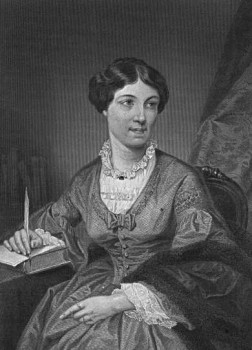
Harriet Martineau (1802–1876) was one of the first women sociologists in the 19th century. There are a number of other women who might compete with her for the title of the first woman sociologist, such as Catherine Macaulay, Mary Wollstonecraft, Flora Tristan, and Beatrice Webb, but Martineau’s specifically sociological credentials are strong. She was for a long time known principally for her English translation of Comte’s Course in Positive Philosophy. Through this popular translation she introduced the concept of sociology as a methodologically rigorous discipline to an English-speaking audience. But she also created a body of her own work in the tradition of the great social reform movements of the 19th century, and introduced a sorely missing woman’s perspective into the discourse on society.
It was a testament to her abilities that after she became impoverished at the age of 24 with the death of her father, brother, and fiancé, she was able to earn her own income as the first woman journalist in Britain to write under her own name. From the age of 12, she suffered from severe hearing loss and was obliged to use a large ear trumpet to converse. She impressed a wide audience with a series of articles on political economy in 1832. In 1834 she left England to engage in two years of study of the new republic of the United States and its emerging institutions: prisons, insane asylums, factories, farms, Southern plantations, universities, hospitals, and churches. On the basis of extensive research, interviews, and observations, she published Society in America and worked with abolitionists on the social reform of slavery (Zeitlin, 1997). She also worked for social reform in the situation of women: the right to vote, have an education, pursue an occupation, and enjoy the same legal rights as men. Together with Florence Nightingale, she worked on the development of public health care, which led to early formulations of the welfare system in Britain (McDonald, 1998).
Émile Durkheim (1858–1917)
In response to the violence and social disruption of the revolutions of the 18th and 19th centuries, the intellectuals began to write that a strong society, as exemplified by strong social bonds and rules and effective socialization, was needed to prevent social order from disintegrating (Collins, 1994). Without a strong society and effective socialization, they warned, social order breaks down, and violence and other signs of social disorder result. This general framework reached fruition in the writings of Émile Durkheim (1858–1917), a French scholar largely responsible for the sociological perspective as we now know it. Adopting the conservative intellectuals’ view of the need for a strong society, Durkheim felt that human beings have desires that result in chaos unless society limits them. He wrote, “To achieve any other result, the passions first must be limited.…But since the individual has no way of limiting them, this must be done by some force exterior to him” (Durkheim, 1897/1952, p. 274). This force, Durkheim continued, is the moral authority of society.
Émile Durkheim was a founder of sociology and largely responsible for the sociological perspective as we now know it.
https://www.marxists.org/glossary/people/d/pics/durkheim.jpg – public domain.
How does society limit individual aspirations? Durkheim emphasized two related social mechanisms: socialization and social integration. Socialization helps us learn society’s rules and the need to cooperate, as people end up generally agreeing on important norms and values, while social integration, or our ties to other people and to social institutions such as religion and the family, helps socialize us and integrate us into society and reinforce our respect for its rules. In general, Durkheim added, society comprises many types of social facts, or forces external to the individual, that affect and constrain individual attitudes and behavior. The result is that socialization and social integration help establish a strong set of social rules—or, as Durkheim called it, a strong collective conscience—that is needed for a stable society. By so doing, society “creates a kind of cocoon around the individual, making him or her less individualistic, more a member of the group” (Collins, 1994, p. 181). Weak rules or social ties weaken this “moral cocoon” and lead to social disorder. In all of these respects, says Randall Collins (1994, p. 181), Durkheim’s view represents the “core tradition” of sociology that lies at the heart of the sociological perspective.
Durkheim used suicide to illustrate how social disorder can result from a weakening of society’s moral cocoon. Focusing on group rates of suicide, he felt they could not be explained simply in terms of individual unhappiness and instead resulted from external forces. One such force is anomie, or normlessness, which results from situations, such as periods of rapid social change, when social norms are weak and unclear or social ties are weak. When anomie sets in, people become more unclear about how to deal with problems in their life. Their aspirations are no longer limited by society’s constraints and thus cannot be fulfilled. The frustration stemming from anomie leads some people to commit suicide (Durkheim, 1897/1952).
To test his theory, Durkheim gathered suicide rate data and found that Protestants had higher suicide rates than Catholics. To explain this difference, he rejected the idea that Protestants were less happy than Catholics and instead hypothesized that Catholic doctrine provides many more rules for behavior and thinking than does Protestant doctrine. Protestants’ aspirations were thus less constrained than Catholics’ desires. In times of trouble, Protestants also have fewer norms on which to rely for comfort and support than do Catholics. He also thought that Protestants’ ties to each other were weaker than those among Catholics, providing Protestants fewer social support networks to turn to when troubled. In addition, Protestant belief is ambivalent about suicide, while Catholic doctrine condemns it. All of these properties of religious group membership combine to produce higher suicide rates among Protestants than among Catholics.
Today’s functionalist perspective arises out of Durkheim’s work and that of other conservative intellectuals of the 19th century. It uses the human body as a metaphor for understanding society. In the human body, our various organs and other body parts serve important functions for the ongoing health and stability of our body. Our eyes help us see, our ears help us hear, our heart circulates our blood, and so forth. Just as we can understand the body by describing and understanding the functions that its parts serve for its health and stability, so can we understand society by describing and understanding the functions that its “parts”—or, more accurately, its social institutions—serve for the ongoing health and stability of society. Thus functionalism emphasizes the importance of social institutions such as the family, religion, and education for producing a stable society. We look at these institutions in later chapters.
Similar to the view of the conservative intellectuals from which it grew, functionalism is skeptical of rapid social change and other major social upheaval. The analogy to the human body helps us understand this skepticism. In our bodies, any sudden, rapid change is a sign of danger to our health. If we break a bone in one of our legs, we have trouble walking; if we lose sight in both our eyes, we can no longer see. Slow changes, such as the growth of our hair and our nails, are fine and even normal, but sudden changes like those just described are obviously troublesome. By analogy, sudden and rapid changes in society and its social institutions are troublesome according to the functionalist perspective. If the human body evolved to its present form and functions because these made sense from an evolutionary perspective, so did society evolve to its present form and functions because these made sense. Any sudden change in society thus threatens its stability and future. By taking a skeptical approach to social change, functionalism supports the status quo and is thus often regarded as a conservative perspective.
Conflict Theory
In many ways, conflict theory is the opposite of functionalism but ironically also grew out of the Industrial Revolution, thanks largely to Karl Marx (1818–1883) and his collaborator, Friedrich Engels (1820–1895). Whereas conservative intellectuals feared the mass violence resulting from industrialization, Marx and Engels deplored the conditions they felt were responsible for the mass violence and the capitalist society they felt was responsible for these conditions. Instead of fearing the breakdown of social order that mass violence represented, they felt that revolutionary violence was needed to eliminate capitalism and the poverty and misery they saw as its inevitable result (Marx, 1867/1906; Marx & Engels, 1848/1962).
Karl Marx (1818–1883)
The tradition of historical materialism that developed from Karl Marx’s work is one of the central frameworks of critical sociology. Historical materialism concentrates on the study of how our everyday lives are structured by the connection between relations of power and economic processes. The basis of this approach begins with the macro-level question of how specific relations of power and specific economic formations have developed historically. These form the context in which the institutions, practices, beliefs, and social rules (norms) of everyday life are situated. The elements that make up a culture — a society’s shared practices, values, beliefs, and artifacts — are structured by the society’s economic mode of production: the way human societies act upon their environment and its resources in order to use them to meet their needs. Hunter-gatherer, agrarian, feudal, and capitalist modes of production have been the economic basis for very different types of society throughout world history.
Karl Marx and his collaborator Friedrich Engels were intense critics of capitalism. Their work inspired the later development of conflict theory in sociology.
Wikimedia Commons – public domain.
According to Marx and Engels, every society is divided into two classes based on the ownership of these means of production. In a capitalist society, the bourgeoisie, or capitalist class, owns the means of production, while the proletariat, or working class, who do not own the means of production, are oppressed and exploited by the bourgeoisie as paid wage laborers. This difference creates an automatic conflict of interests between the two groups. Because profit is the main goal of capitalism, the bourgeoisie’s interest lies in maximizing profit. To do so, capitalists try to keep wages as low as possible and to spend as little money as possible on working conditions. This central fact of capitalism, said Marx and Engels, is the basis of social conflict in capitalist societies. The rise among workers of class consciousness, or an awareness of the reasons for their oppression, leads them to revolt against the bourgeoisie to eliminate the oppression and exploitation they suffer. Simply put, the bourgeoisie is interested in maintaining its position at the top of society, while the proletariat’s interest lies in rising up from the bottom and overthrowing the bourgeoisie to create an egalitarian society.
Over the years, Marx and Engels’s views on the nature of capitalism and class relations have greatly influenced social, political, and economic theory and also inspired revolutionaries in nations around the world. However, history has not supported their prediction that capitalism will inevitably result in a revolution of the proletariat. For example, no such revolution has occurred in the United States, where workers never developed the degree of class consciousness envisioned by Marx and Engels. Because the United States is thought to be a free society where everyone has the opportunity to succeed, even poor Americans feel that the system is basically just. Thus various aspects of American society and ideology have helped minimize the development of class consciousness and prevent the revolution that Marx and Engels foresaw.
William Edward Burghardt “W. E. B.” Du Bois (1868–1963)
Despite the shortcomings of Marx and Engels predictions, their basic view of conflict arising from unequal positions held by members of society lies at the heart of today’s conflict theory. This theory emphasizes that different groups in society have different interests stemming from their different social positions. These different interests in turn lead to different views on important social issues. Some versions of the theory root conflict in divisions based on race and ethnicity, gender, and other such differences, while other versions follow Marx and Engels in seeing conflict arising out of different positions in the economic structure. An oft neglected giant of American sociology, William Edward Burghardt (WEB) du Bois, placed racial oppression at the center of his conflict analysis of American society in the late 19th and early 20th centuries.
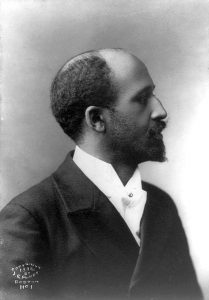
Wikimedia Commons – public domain.
William Edward Burghardt du Bois was born in Great Barrington, Massachusetts on February 23, 1868. He lived to be 95 years old, and during the course of his long life authored multiple books that are still deeply important to the study of sociology—in particular, how sociologists study race and racism. Du Bois is regarded as one of the founders of the discipline and was the first Black man to receive a Ph.D. from Harvard University. He was also one of the founders of the NAACP, a member of the Socialist Party of America, and a leader at the forefront of the movement for Black civil rights in the U.S. Later in his life he was an activist for peace and opposed nuclear weapons, which made him a target of FBI harassment. Also a leader of the Pan-African movement, he moved to Ghana and renounced his U.S. citizenship in 1961.
The Philadelphia Negro, published in 1896, is Du Bois’s first major work. The study, considered one of the first examples of scientifically framed and conducted sociology, was based on over 2,500 in-person interviews systematically conducted with African American households in the seventh ward of Philadelphia from August 1896 through December 1897. In a first for sociology, Du Bois combined his research with census data to create visual illustrations of his findings in bar graphs. Through this combination of methods, he clearly illustrated the realities of racism and how it impacted the lives and opportunities of this community, providing much-needed evidence in the fight to disprove the supposed cultural and intellectual inferiority of black people.
The Souls of Black Folk, published in 1903, is a widely-taught collection of essays that draws on Du Bois’s own experience of growing up Black in a white nation to poignantly illustrate the psycho-socio affects of racism. In chapter 1 of this book, Du Bois put forth two concepts that have become staples of sociology and race theory: “double-consciousness” and “the veil.” Du Bois used the metaphor of the veil to describe how Black people see the world differently from whites, given how race and racism shape their experiences and interactions with others. Physically speaking, the veil can be understood as dark skin, which, in our society marks Black people as different from whites. Du Bois recounts first realizing the veil’s existence when a young white girl refused his greeting card in elementary school: “It dawned upon me with certain suddenness that I was different from the others… shut out from their world by a vast veil.” Du Bois asserted that the veil prevents Black people from having true self-consciousness, and instead forces them to have double-consciousness, wherein they have an understanding of themselves within their families and community, but also must view themselves through the eyes of others who see them as different and inferior. He wrote:
“It is a peculiar sensation, this double-consciousness, this sense of always looking at one’s self through the eyes of others, of measuring one’s soul by the tape of a world that looks on in amused contempt and pity. One ever feels his twoness,–an American, a Negro; two souls, two thoughts, two unreconciled strivings; two warring ideals in one dark body, whose dogged strength alone keeps it from being torn asunder.”
Published in 1935, Black Reconstruction in America, 1860-1880 uses historical evidence to illustrate how race and racism served the economic interests of capitalists in the Reconstruction-era southern U.S. By dividing workers by race and fueling racism, the economic and political elite ensured that a unified class of laborers would not develop, which allowed for extreme economic exploitation of both Black and white workers. Importantly, this work is also an illustration of the economic struggle of newly freed slaves, and the roles they played in reconstructing the post-war south.
Feminist theory has developed in sociology and other disciplines since the 1970s and for our purposes will be considered a specific application of conflict theory. In this case, the conflict concerns gender inequality rather than the class inequality emphasized by Marx and Engels and racial inequality emphasized by W.E.B. Du Bois. Although many variations of feminist theory exist, they all emphasize that society is filled with gender inequality such that women are the subordinate sex in many dimensions of social, political, and economic life (Tong, 2009). Liberal feminists view gender inequality as arising out of gender differences in socialization, while Marxist feminists say that this inequality is a result of the rise of capitalism, which made women dependent on men for economic support. On the other hand, radical feminists view gender inequality as present in all societies, not just capitalist ones. Chapter 11 “Gender and Gender Inequality” examines some of the arguments of feminist theory at great length. In general, however, conflict theory in its various forms emphasizes that the various parts of society contribute to ongoing inequality, whereas functionalist theory, as we have seen, stresses that they contribute to the ongoing stability of society. Thus, while functionalist theory emphasizes the benefits of the various parts of society for ongoing social stability, conflict theory favors social change to reduce inequality. In this regard, conflict theory may be considered a progressive perspective.
Symbolic Interactionism
Whereas the functionalist and conflict perspectives are macro approaches, symbolic interactionism is a micro approach that focuses on the interaction of individuals and on how they interpret their interaction. The focus in interpretative sociology is on understanding or interpreting human activity in terms of the meanings that humans attribute to it. It is sometimes referred to as social constructivism to capture the way that individuals construct a world of meaning that affects the way people experience the world and conduct themselves within it. The world evidently has a reality outside of these meanings, but interpretive sociology focuses on analysing the processes of collective meaning construction that give us access to it.
Max Weber (1864–1920)
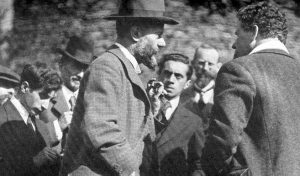
Wikimedia Commons – public domain.
Max Weber’s Verstehende (understanding) sociology is often cited as the origin of the interactionist perspective in sociology because of his emphasis on the centrality of meaning and intention in social action:
Sociology… is a science which attempts the interpretive understanding of social action in order thereby to arrive at a causal explanation of its course and effects. In “action” is included all human behaviour when and in so far as the acting individual attaches a subjective meaning to it…. [Social action is] action mutually oriented to that of each other (Weber, 1922).
This emphasis on the meaningfulness of social action — action to which individuals attach subjective meanings and interpret those of others — is taken up later by phenomenology, eth-nomethodology, symbolic interactionism and various contemporary schools of social constructivism. The interpretive perspective is concerned with developing a knowledge of social interaction from the point of view of the meanings individuals attribute to it. Social interaction is a meaning-oriented practice. As a result of its research, interpretive sociology promotes the goal of greater mutual understanding and the possibility of consensus among members of society.
George Herbert Mead (1863–1931)
The roots of social interactionism also lie in the work in the early 1900s of American sociologists, social psychologists, and philosophers who were interested in human consciousness and action. George Herbert Mead (1863–1931) is considered one of the founders of symbolic interactionism. His work in Mind, Self and Society (1934) on the “self” and the stages of child development as a sequence of role-playing capacities provides the classic analyses of the perspective. We will discuss Mead further in Chapter 5 (Socialization) but Mead’s key insight is that the self develops only through social interaction with others. We learn to be ourselves by the progressive incorporation of the attitudes of others towards us into our concept of self.
His student Herbert Blumer (1900–1987) synthesized Mead’s work and popularized the theory. Blumer (1969), a sociologist at the University of Chicago, built on Mead’s writings to develop symbolic interactionism, a term he coined. This view remains popular today, in part because many sociologists object to what they perceive as the overly deterministic view of human thought and action and passive view of the individual inherent in the sociological perspective derived from Durkheim. Drawing on Blumer’s work, symbolic interactionists feel that people do not merely learn the roles that society has set out for them; instead they construct these roles as they interact. As they interact, they “negotiate” their definitions of the situations in which they find themselves and socially construct the reality of these situations. In so doing, they rely heavily on symbols such as words and gestures to reach a shared understanding of their interaction.
An example is the familiar symbol of shaking hands. In the United States and many other societies, shaking hands is a symbol of greeting and friendship. This simple act indicates that you are a nice, polite person with whom someone should feel comfortable. To reinforce this symbol’s importance for understanding a bit of interaction, consider a situation where someone refuses to shake hands. This action is usually intended as a sign of dislike or as an insult, and the other person interprets it as such. Their understanding of the situation and subsequent interaction will be very different from those arising from the more typical shaking of hands.
Now let’s say that someone does not shake hands, but this time the reason is that the person’s right arm is broken. Because the other person realizes this, no snub or insult is inferred, and the two people can then proceed to have a comfortable encounter. Their definition of the situation depends not only on whether they shake hands but also, if they do not shake hands, on why they do not. As the term symbolic interactionism implies, their understanding of this encounter arises from what they do when they interact and their use and interpretation of the various symbols included in their interaction. According to symbolic interactionists, social order is possible because people learn what various symbols (such as shaking hands) mean and apply these meanings to different kinds of situations. If you visited a society where sticking your right hand out to greet someone was interpreted as a threatening gesture, you would quickly learn the value of common understandings of symbols.
Georg Simmel (1858–1918)
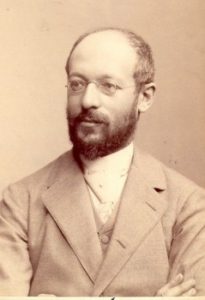
Wikimedia Commons – public domain.
Georg Simmel (1858–1918) was one of the founding fathers of sociology, although his place in the discipline is not always recognized. In part, this oversight may be explained by the fact that Simmel was a Jewish scholar in Germany at the turn of 20th century and, until 1914, he was unable to attain a proper position as a professor due to anti-Semitism. Simmel’s sociology focused on the key question, “How is society possible?” His answer led him to develop what he called formal sociology, or the sociology of social forms. In his essay “The Problem of Sociology,” Simmel reaches a strange conclusion for a sociologist: “There is no such thing as society ‘as such.’” “Society” is just the name we give to the “extraordinary multitude and variety of interactions [that] operate at any one moment” (Simmel, 1908/1971). This is a basic insight of micro-sociology. However useful it is to talk about macro-level phenomena like capitalism, the moral order, or rationalization, in the end what these phenomena refer to is a multitude of ongoing, unfinished processes of interaction between specific individuals. Nevertheless, the phenomena of social life do have recognizable forms, and the forms do guide the behavior of individuals in a regularized way.
Utilitarianism
Utilitarianism is a general view of human behavior that says people act to maximize their pleasure and to reduce their pain. It originated in the work of such 18th-century thinkers as the Italian economist Cesare Beccaria (1738–1794) and the English philosopher Jeremy Bentham (1748–1832). Both men thought that people act rationally and decide before they act whether their behavior will cause them more pleasure or pain. Applying their views to crime, they felt the criminal justice system in Europe at the time was far harsher than it needed to be to deter criminal behavior. Another 18th-century utilitarian thinker was Adam Smith, whose book The Wealth of Nations (1776/1910) laid the foundation for modern economic thought. Indeed, at the heart of economics is the view that sellers and buyers of goods and services act rationally to reduce their costs and in this and other ways to maximize their profits.
In sociology, utilitarianism is commonly called exchange theory or rational choice theory (Coleman, 1990; Homans, 1961). No matter what name it goes under, this view emphasizes that when people interact, they seek to maximize the benefits they gain from the interaction and to reduce the disadvantages. If they decide that the interaction’s benefits outweigh its disadvantages, they will initiate the interaction or continue it if it is already under way. If they instead decide that the interaction’s disadvantages outweigh its benefits, they will decline to begin interacting or stop the interaction if already begun. Social order is possible because people realize it will be in their best interests to cooperate and to make compromises when necessary.
A familiar application of exchange theory would be a dating relationship. Each partner in a dating relationship gives up a bit of autonomy in return for love and other benefits of being close to someone. Yet every relationship has its good and bad moments, and both partners make frequent compromises to ensure the relationship will endure. As long as the couple feels the good moments outweigh the bad moments, the relationship will continue. But once one or both partners decide the reverse is true, the relationship will end.
Comparing Macro and Micro Perspectives
This brief presentation of the four major theoretical perspectives in sociology is necessarily incomplete but should at least outline their basic points. Each perspective has its proponents, and each has its detractors. All four offer a lot of truth, and all four oversimplify and make other mistakes. We will return to them in many of the chapters ahead, but a brief critique is in order here.
A major problem with functionalist theory is that it tends to support the status quo and thus seems to favor existing inequalities based on race, social class, and gender. By emphasizing the contributions of social institutions such as the family and education to social stability, functionalist theory minimizes the ways in which these institutions contribute to social inequality.
Conflict theory also has its problems. By emphasizing inequality and dissensus in society, conflict theory overlooks the large degree of consensus on many important issues. And by emphasizing the ways in which social institutions contribute to social inequality, conflict theory minimizes the ways in which these institutions are necessary for society’s stability.
Neither of these two macro perspectives has very much to say about social interaction, one of the most important building blocks of society. In this regard, the two micro perspectives, symbolic interactionism and utilitarianism, offer significant advantages over their macro cousins. Yet their very micro focus leads them to pay relatively little attention to the reasons for, and possible solutions to, such broad and fundamentally important issues as poverty, racism, sexism, and social change, which are all addressed by functionalism and conflict theory. In this regard, the two macro perspectives offer significant advantages over their micro cousins. In addition, one of the micro perspectives, rational choice theory, has also been criticized for ignoring the importance of emotions, altruism, and other values for guiding human interaction (Lowenstein, 1996).
These criticisms aside, all four perspectives taken together offer a more comprehensive understanding of social phenomena than any one perspective can offer alone. To illustrate this, let’s return to our armed robbery example. A functionalist approach might suggest that armed robbery and other crimes actually serve positive functions for society. As one function, fear of crime ironically strengthens social bonds by uniting the law-abiding public against the criminal elements in society. As a second function, armed robbery and other crimes create many jobs for police officers, judges, lawyers, prison guards, the construction companies that build prisons, and the various businesses that provide products the public buys to help protect against crime.
To explain armed robbery, symbolic interactionists focus on how armed robbers decide when and where to rob a victim and on how their interactions with other criminals reinforce their own criminal tendencies.
Geoffrey Fairchild – The Robbery – CC BY 2.0.
Conflict theory would take a very different but no less helpful approach to understanding armed robbery. It might note that most street criminals are poor and thus emphasize that armed robbery and other crimes are the result of the despair and frustration of living in poverty and facing a lack of jobs and other opportunities for economic and social success. The roots of street crime, from the perspective of conflict theory, thus lie in society at least as much as they lie in the individuals committing such crime.
In explaining armed robbery, symbolic interactionism would focus on how armed robbers make such decisions as when and where to rob someone and on how their interactions with other criminals reinforce their own criminal tendencies. Exchange or rational choice theory would emphasize that armed robbers and other criminals are rational actors who carefully plan their crimes and who would be deterred by a strong threat of swift and severe punishment.
Now that you have some understanding of the major theoretical perspectives in sociology, we will discuss in Chapter 2 “Eye on Society: Doing Sociological Research” how sociologists conduct their research.
Key Takeaways
- Sociological theories may be broadly divided into macro approaches and micro approaches.
- Functionalism emphasizes the importance of social institutions for social stability and implies that far-reaching social change will be socially harmful.
- Conflict theory emphasizes social inequality and suggests that far-reaching social change is needed to achieve a just society.
- Symbolic interactionism emphasizes the social meanings and understandings that individuals derive from their social interaction.
- Utilitarianism emphasizes that people act in their self-interest by calculating whether potential behaviors will be more advantageous than disadvantageous.
Self Check
References
Blumer, H. (1969). Symbolic interactionism: Perspective and method. Englewood Cliffs, NJ: Prentice Hall.
Cole, Nicki Lisa, Ph.D. “How W.E.B. Du Bois Made His Mark on Sociology.” ThoughtCo, Jan. 9, 2019, thoughtco.com/web-dubois-birthday-3026475.
Coleman, J. S. (1990). Foundations of social theory. Cambridge, MA: Harvard University Press; Homans, G. (1961). Social behavior: Its elementary forms. Orlando, FL: Harcourt Brace Jovanovich.
Collins, R. (1994). Four sociological traditions. New York, NY: Oxford University Press.
Durkheim, É. (1952). Suicide. New York, NY: Free Press. (Original work published 1897).
Golding, W. (1954). Lord of the flies. London, England: Coward-McCann.
Lengermann, Patricia and Niebrugge, Jill. (2007). The women founders: Sociology and social theory, 1830–1930. Longrove, IL: Waveland Press. (original work published 1997)
Lowenstein, G. (1996). Out of control: Visceral influences on behavior. Organizational Behavior and Human Decision Processes, 65, 272–292.
Marx, K. 1906. Capital. New York, NY: Random House. (Original work published 1867)
Marx, K., & Engels, F. (1962). The communist manifesto. In Marx and Engels: Selected works (pp. 21–65). Moscow, Russia: Foreign Language Publishing House. (Original work published 1848).
McDonald, Lynn. (1998). Women theorists on society and politics. Waterloo: Wilfrid Laurier University Press.
Smith, A. (1910). The wealth of nations. London, England: J. M. Dent & Sons; New York, NY: E. P. Dutton. (Original work published 1776).
Tong, R. (2009). Feminist thought: A more comprehensive introduction. Boulder, CO: Westview Press.
Zeitlin, Irving. (1997). Ideology and the development of sociological theory. Saddle River, NJ: Prentice Hall.


